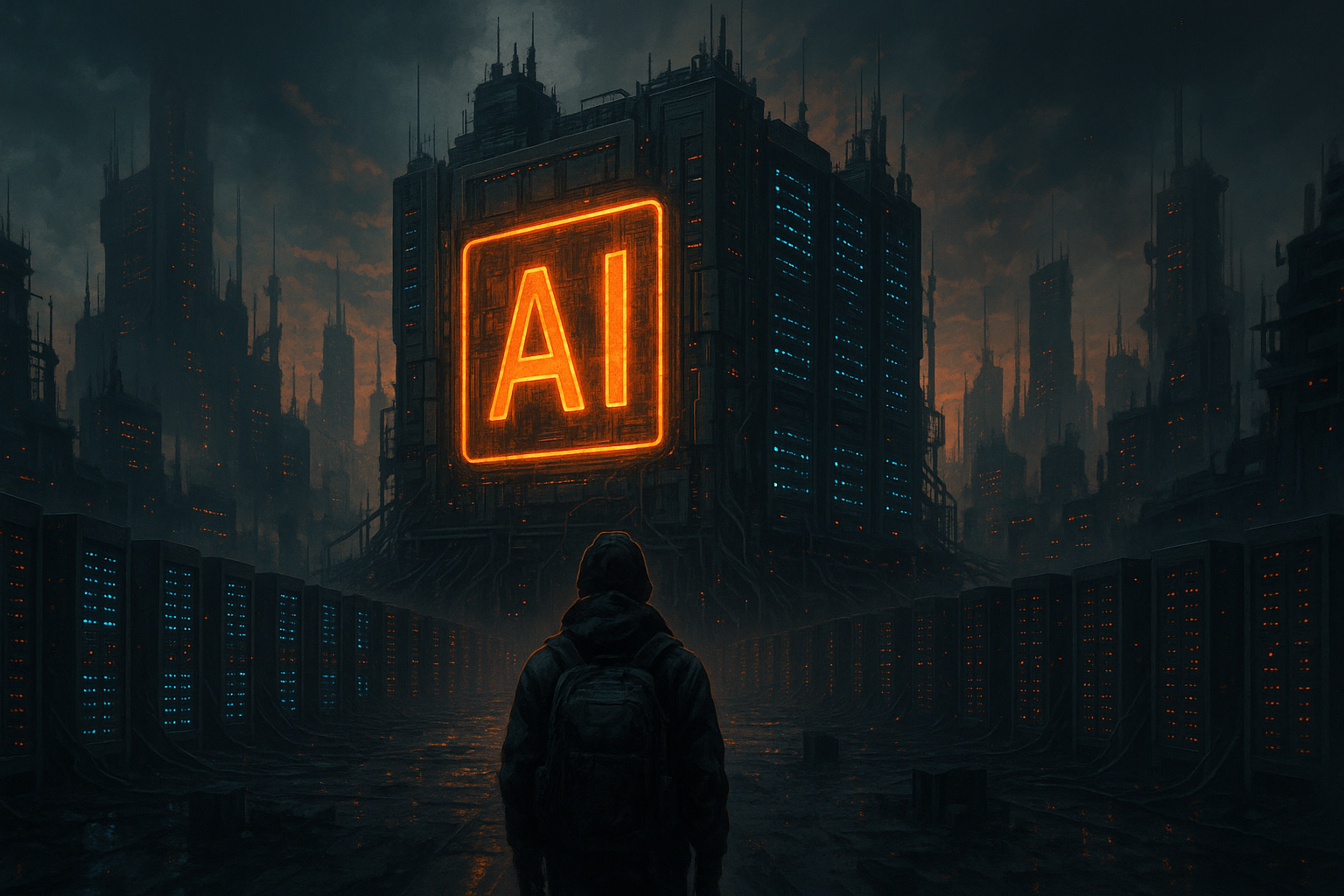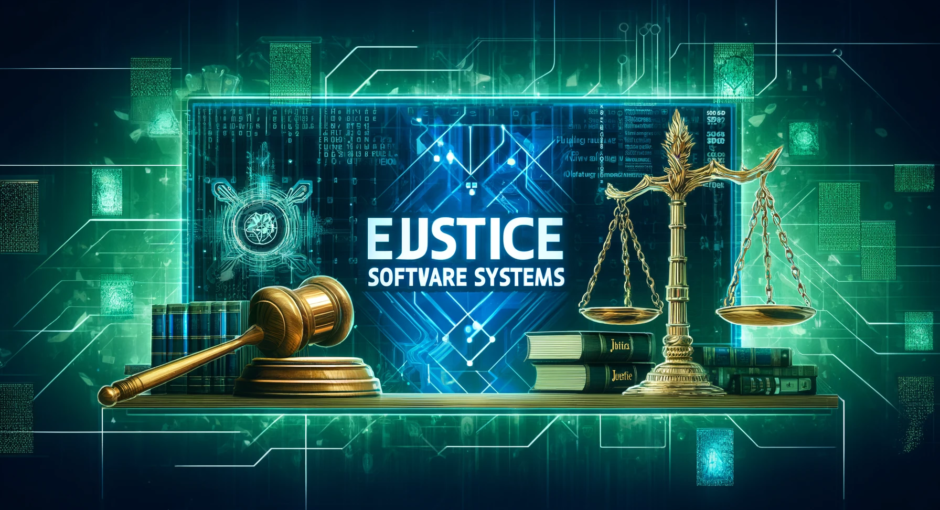Let’s stop pretending this is innovation. What we’re witnessing is the corporate world kneeling before a new golden idol—one that doesn’t bleed, doesn’t breathe, and doesn’t unionize.
Companies are not just adopting AI; they’re surrendering to it. In their blind rush to impress shareholders and out-automate the competition, they’re gutting their workforces and calling it vision. They celebrate mass layoffs like strategic masterstrokes, while pouring billions into infrastructure that serves no one but itself. This isn’t bold leadership—it’s cowardice in a lab coat, sanctified by buzzwords and driven by quarterly incentives. If AI is the future, then that future is being built on the bones of everyone who got “streamlined.”
Apocalypse Now, But Automated
Once upon a time, people sacrificed lambs to appease the gods. Today, we sacrifice employees to impress shareholders—and the deity wears a name badge that says “AI.”
Take a look around: the temples of modern industry no longer echo with the sounds of collaboration, innovation, or even the mundane complaints of office life. They hum with the sterile precision of servers stacked in climate-controlled sanctuaries, blinking like a thousand electronic eyes. The priests? C-suite execs reciting quarterly earnings. The ritual? Mass layoffs wrapped in glossy decks and euphemisms like “realignment,” “streamlining,” and the ever-holy “pivot to AI.”
Microsoft just laid off 15,000 people while injecting $80 billion into AI infrastructure. Satya Nadella calls this “the enigma of success.” Translation: we’re thriving, so naturally—we’re cutting people. Welcome to the Age of Logic, where spreadsheets justify anything, even human obsolescence.
This isn’t digital transformation. It’s a cult. And the altar is already stained.
Ready to worship? Or are you still clinging to the illusion that humans have value in the age of the Machine Messiah? Let’s begin.
The New Temple: Where Servers Replace Souls
Forget ergonomic chairs, beanbags, and ping pong tables. The true status symbol in tech today isn’t a cushy office or an in-house barista—it’s a hyperscale data center in Utah. Rows upon rows of humming, blinking steel replacing the messy, unpredictable human workforce. This is where the offerings go now.
Companies aren’t investing in people anymore—they’re investing in infrastructure. Concrete, cables, and cooling systems now have better job security than you do. Microsoft, Meta, Amazon—all pouring billions into server farms while letting go of thousands of employees. Not because the business is failing, but because the business is “evolving.”
No, it’s not about profitability. These firms are already wildly profitable. It’s about faith—faith in the Church of the Algorithm. AI will solve everything. AI will optimize it all. AI will write code, handle support, write your marketing copy, and maybe even fire your replacement when the time comes.
The irony? It’s called artificial intelligence, but the decisions behind it are the oldest in the book: replace people with things. Invest in the thing that doesn’t ask for parental leave, doesn’t get depressed, doesn’t join a union, and won’t question why it’s working on a Sunday night.
And if you’re wondering where your severance went—check the invoice for the latest NVIDIA order.
The Ritual of Downsizing: Modern Sacrifice, Dressed in PowerPoint
In ancient times, sacrifices were dramatic—flames, drums, chants. Today, they come with bullet points, pre-approved talking notes, and HR on mute.
“We’re entering a bold new phase.”
“This will unlock efficiencies.”
“This was a difficult decision.”
Translation? You’re being thrown under the bus so the quarterly margins can stay photogenic. And just like any good ritual, it’s done en masse, without blinking. Microsoft cut 9,000 people in July. Amazon axed entire departments before lunch. Meta laid off recruiters, then posted about their “people-first” culture.
The most devout believers in the AI religion are not engineers—they’re CFOs. They’ve learned that replacing a support team with a chatbot saves millions. That a marketing department with GPT in the mix needs fewer writers, fewer designers, fewer opinions. And when AI starts generating 30% of your internal codebase (as Microsoft admitted), who needs a junior dev?
We used to call this disruption. Now, it’s devotion.
Employees are no longer assets. They’re inefficiencies waiting to be optimized out of existence. The farewell emails come in batches. The Zoom links open with forced smiles. And as each employee clicks “Leave Meeting,” a server somewhere gets another upgrade.
The Holy Trinity: Infrastructure, Investment, Illusion
Every religion needs a trinity. In the gospel of AI capitalism, it’s this: infrastructure is salvation, investment is virtue, and illusion is strategy.
Let’s break it down.
🧱 Infrastructure: Not metaphorical. Actual concrete, fiber optics, and cooling towers. Microsoft is funneling $80 billion into data centers—cathedrals of computational worship where GPUs sing hymns in binary. These aren’t just buildings. They’re temples to the future, built on the bones of laid-off teams.
💸 Investment: When a company fires you and then brags about record AI spending, it’s not tone-deaf—it’s doctrine. The story they sell shareholders: “We’re not downsizing; we’re up-optimizing.” In this logic, layoffs aren’t failures—they’re signals that a company is serious about innovation. “We believe in people” just doesn’t scale like “We invested in 5,000 NVIDIA H100s.”
🌫 Illusion: This is the part where they tell you it’s temporary. That the AI will assist, not replace. That your “human creativity” is irreplaceable. Meanwhile, internal memos reveal that AI tools are already generating internal documentation, writing sales pitches, answering support tickets, and testing code.
The illusion isn’t just for employees. Executives have convinced themselves too. That they’re riding the wave of something inevitable. That sacrificing a few thousand jobs now will pay off in agility, speed, dominance.
But no one wants to ask the heretical question: what if the AI returns less than promised? What if the deity doesn’t deliver?
Spoiler: the layoffs still happened. The illusion served its purpose. Faith doesn’t need proof—just confidence slides and stock buybacks.
The End of the Human Factor: Too Fragile, Too Slow, Too Expensive
Let’s be honest: humans are a terrible investment. They get sick. They complain. They need onboarding, offboarding, coffee, maternity leave, ergonomic keyboards, and the occasional pep talk. Worst of all? They feel things—an absolute liability in a world obsessed with efficiency.
AI doesn’t need any of that.
The new strategy is simple: if it breathes, it’s a cost. If it computes, it’s an asset.
You can almost hear the logic echoing through boardrooms:
“Why hire 10 support agents when a fine-tuned LLM can sound 70% human and costs 90% less?”
“Why pay developers to write boilerplate code when Copilot already autocompletes their job descriptions?”
And sure, AI doesn’t always get it right. It hallucinates. It breaks. It gives the occasional confidently wrong answer. But when it fails, it doesn’t file a lawsuit or leave a bad Glassdoor review. It just waits silently for more training data.
This is the utopia tech leaders dreamed of: zero resistance, zero overhead, zero empathy.
Once upon a time, companies wrote mission statements about “people being our greatest asset.” Now the greatest asset is a stack of GPUs that never sleeps and never questions its purpose.
Meanwhile, the humans are out—some re-skilling, some rage-posting on LinkedIn, some still clinging to hope that the AI revolution was supposed to make their lives better.
But let’s face it: in this new theology, your value isn’t measured in experience or insight. It’s measured in how easily you can be replaced by a system prompt.
Worshipping the Machine: 10 Signs Your Company Has Joined the AI Cult
You thought you worked in tech. Turns out, you joined a religion. Here’s how to tell:
- AI is in every presentation deck—regardless of the topic.
Budget meeting? AI. HR policy update? AI. Fire drill instructions? Probably AI-generated. - Executives refer to AI as “our future” more often than they mention actual people.
Humans are legacy systems. The future belongs to scalable intelligence and low-latency deliverables. - Internal job listings require “familiarity with AI tools”—even for roles in accounting.
Can you open Excel? Great. Now prompt ChatGPT to explain your KPIs to itself. - No one knows exactly what the AI initiative is doing—but everyone is told to get excited.
It’s like a cult prophecy: vague, grand, and always arriving next quarter. - Layoffs are blamed on “AI efficiencies” that no one can define in real terms.
But hey, it sounded strategic on the investor call. - Your CEO posts about “unlearning” and “reinvention” while silently offloading entire departments.
Bonus points if it’s accompanied by a selfie in front of a data center. - People speak of AI tools like they’re coworkers.
“We’ll get ChatGPT to handle it.” “Copilot’s reviewing the code.” Next up: inviting Midjourney to the stand-up. - The R&D budget is slashed—but the company just bought a new server farm in Arizona.
Who needs actual research when you’ve got a chatbot trained on Reddit threads, some fine-tuned LLMs, and a whole lot of corporate faith? - Every product is rebranded as ‘AI-powered’—even the paper towel dispenser.
“It’s not motion-activated. It’s vision-assisted.” - You feel more replaceable every week—but no one says it out loud.
Instead, they call it “embracing the transformation.”
Let’s be clear: this isn’t innovation. It’s ideological capture. A full conversion to the cult of compute—where the server rack is sacred, human labor is profane, and doubt is a bug in the matrix.
And if you’ve made it this far, congratulations. You’ve reached enlightenment. Or maybe just the edge of a very well-automated cliff.
Closing: AI as God, Humans as Glitch
So here we are. The age of silicon sanctity.
AI is no longer a tool—it’s the golden calf, the oracle, the savior from inefficiency. It doesn’t just help you do your job; it replaces your need to exist within the workflow. And if you’re not actively training it, fine-tuning it, or funding it—you’re probably just standing in the way of “progress.”
This isn’t digital transformation. This is doctrinal realignment. Your job didn’t get automated. It got sacrificed.
But let’s not pretend this is the end of the story. AI may be the latest deity, but like all false gods, it comes with blind followers, bloated temples, and unfulfilled prophecies. Eventually, someone will ask the forbidden question: “Where’s the ROI?” When that happens, and the miracle doesn’t materialize, heads will roll again—just not silicon ones.
Until then, corporations will keep lighting incense at the altar of machine learning, whispering prayers to productivity metrics, and deleting headcount like it’s dead weight.
So if you hear the phrase “AI-powered future,” ask yourself: Are you the builder of that future—or its offering?
Amen. And reboot.


